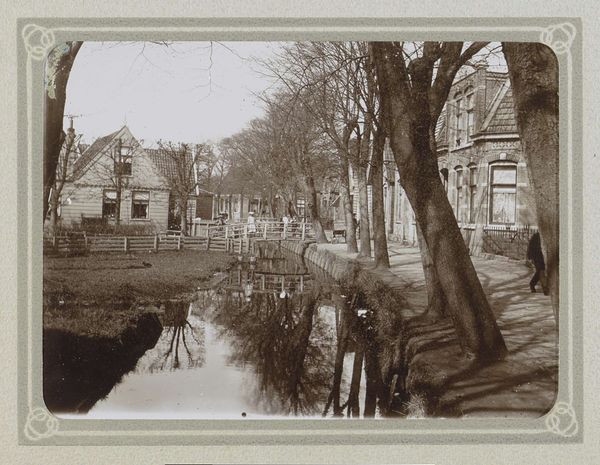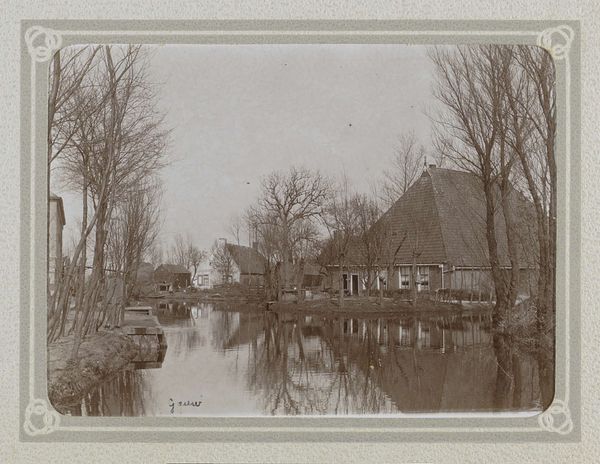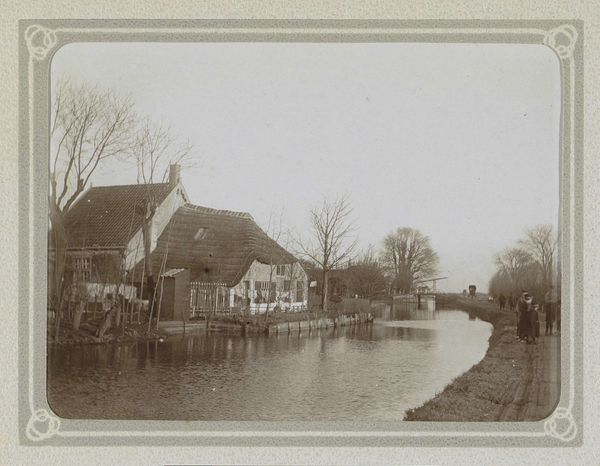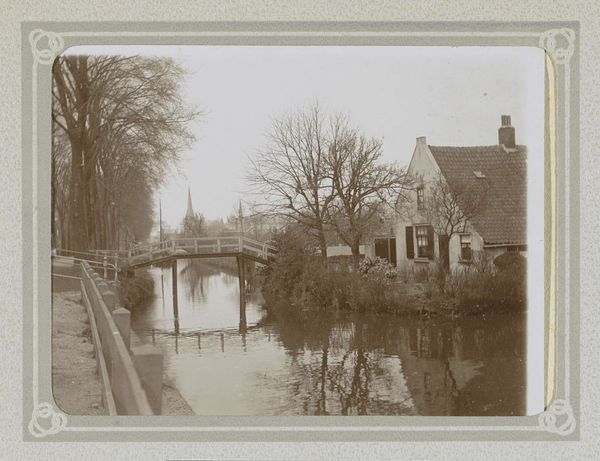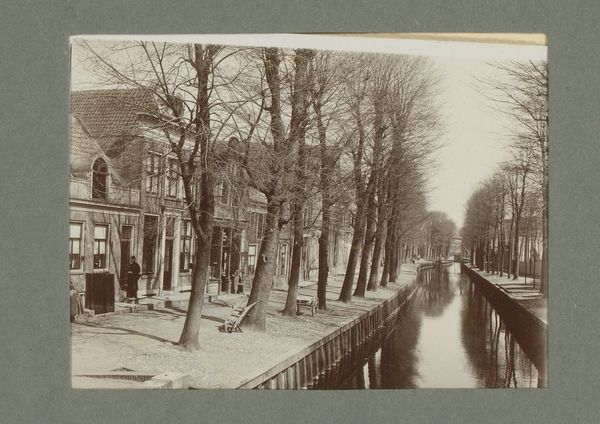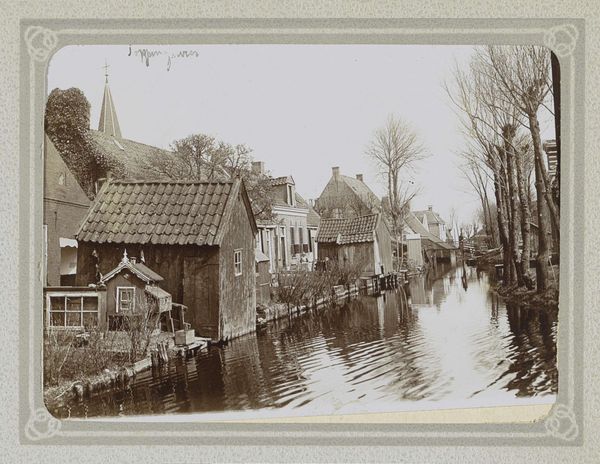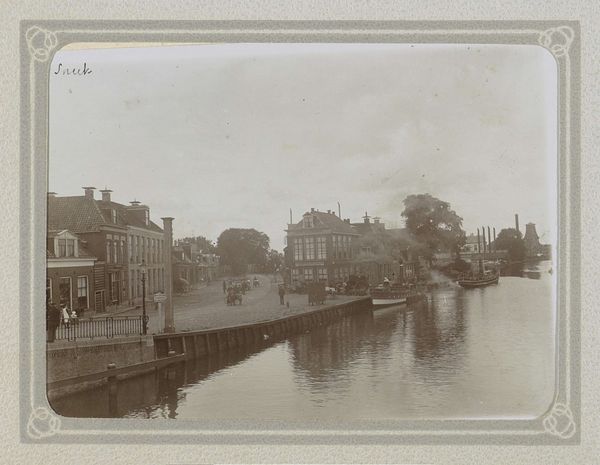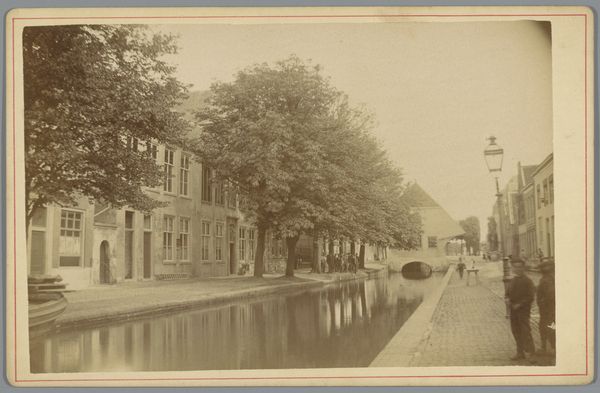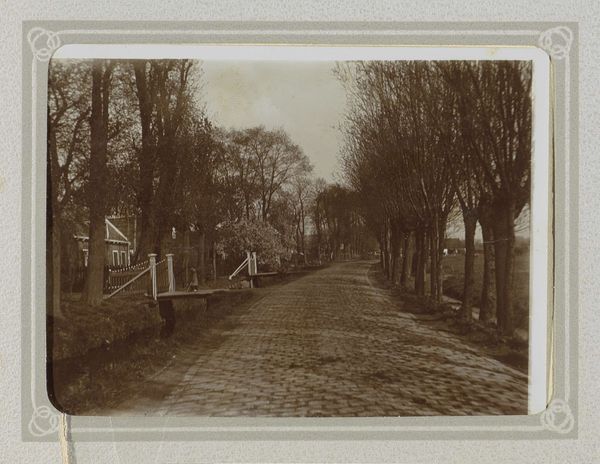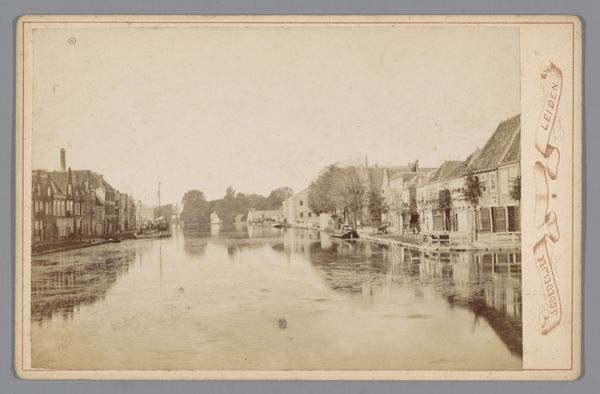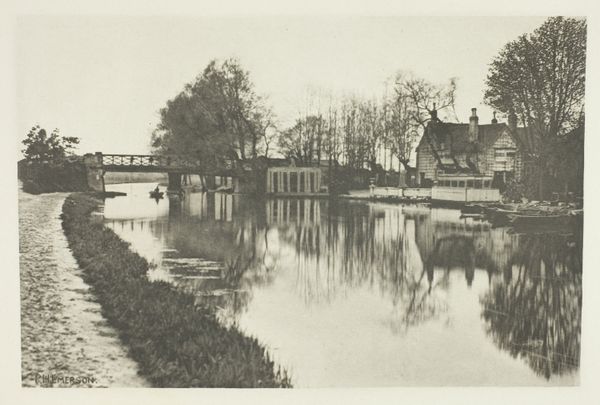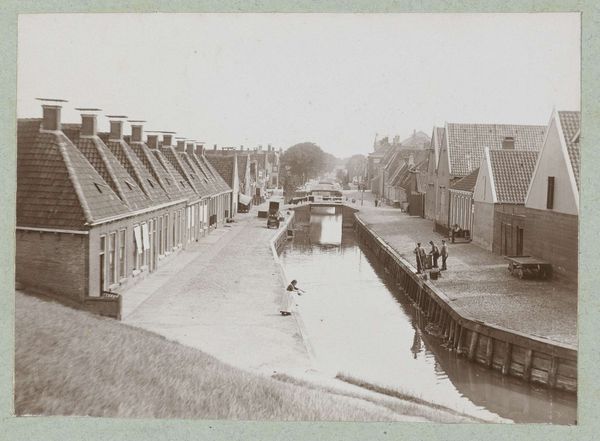
Straat in Kralingen met een huizenrij, een sloot en een ophaalbrug c. 1905 - 1907
0:00
0:00
photography
#
landscape
#
photography
#
cityscape
#
realism
Dimensions: height 81 mm, width 110 mm
Copyright: Rijks Museum: Open Domain
Curator: This photograph, titled "Straat in Kralingen met een huizenrij, een sloot en een ophaalbrug," taken by Folkert Idzes de Jong around 1905-1907, captures a street scene in Kralingen with houses, a canal, and a drawbridge. It’s a study in realism, a testament to its time. Editor: It’s a melancholy landscape. The tones are muted, almost sepia, and there's a stillness that feels almost oppressive. Curator: Well, the calmness certainly speaks to the social climate then. Photography became increasingly accessible at this time, coinciding with urban expansion and social transformation in the Netherlands. The bridge can be seen as a literal and metaphorical crossing. Editor: I’m more interested in how this work invites critical dialogue around class, space, and representation. This carefully composed photograph captures a moment, but it also perpetuates a narrative. Note the meticulous details in the composition— the even distribution of light, the ordered arrangement of houses and how it might reinforce existing power structures. Curator: Indeed, these details provide context for interpreting the photograph's message. The uniformity hints at urban planning of the era, reflecting values like order and functionality prevalent at the time, shaping a community's identity and shared experience. This seemingly objective document is imbued with a particular way of seeing, promoting particular values, that are a commentary on Dutch society and cultural progress at the turn of the century. Editor: To me, this highlights photography's role in both reflecting and shaping social norms. Looking through contemporary theoretical lenses allows us to scrutinize how the past interacts with the present and challenge inherited systems of perception. Curator: That makes me wonder: did de Jong perhaps aim to present Kralingen in a positive light to investors or future inhabitants, showing this area to be orderly? I appreciate how this photograph now invites discussion on history, art, urban planning, and collective identity. Editor: Agreed. The dialogue it sparks reveals the complex interplay of the observer, the observed, and the systems in which they operate. Hopefully we provided useful observations on this powerful piece of historical photography.
Comments
No comments
Be the first to comment and join the conversation on the ultimate creative platform.
